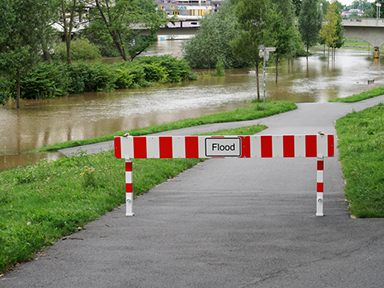With the arrival of the tropical cyclone season, it’s imperative that landlords with property in susceptible areas are prepared. Here’s what you need to know about cyclones and insurance, and a few tips to cyclone-proof your investment property so that you don’t risk your rental being gone with the wind.
Did you know that every year, an average of 11 tropical cyclones develop over Australian waters? Of these, typically four will make landfall.
Cyclones are mostly experienced in north-west Australia, between Exmouth and Broome in Western Australia, in the Northern Territory, and in north-east Queensland, between Port Douglas and Maryborough. WA’s north-west is the most cyclone-prone region in the country.
The cyclone season runs from 1 November to 30 April, with most cyclones occurring between December and April. This cyclone season (2023-24), The Bureau of Meteorology (BOM) forecasted that there was likely to be a below-average number of tropical cyclones, though Tropical Cyclone Jasper had hit the Queensland coast in December.
So, what exactly is a tropical cyclone?
A tropical cyclone is a violent storm with very high winds rotating around a calm centre of low pressure. BOM defines them as low-pressure systems that form over warm tropical waters and produce gale-force winds (sustained winds of 63 km/h or greater and gusts in excess of 90 km/h) near the centre, which persist for more than six hours. The gale-force winds can extend hundreds of kilometres from the cyclone centre. If the sustained winds around the centre reach 118 km/h (gusts in excess 165 km/h), then the system is called a severe tropical cyclone.
What impact can they have?
There are three components of a cyclone that combine to make up the total cyclone hazard:
-
strong winds;
-
intense rainfall; and
-
oceanographic effects including high-energy waves, strong currents, storm surge and resulting storm tide.
Cyclones can cause destructive winds of more than 280km/h, as well as floods.
The strong wind, heavy rain and flying debris caused by a cyclone can extensively damage property – and, even worse, put lives at risk.
Cyclones and insurance
Historical records from BOM date back to 1970 and show that there have been more than 530 tropical cyclones recorded in just over 50 years. As mentioned, the cyclones not only bring destructive winds, but torrential rain and storm surges which lead to severe flooding. The aftermath of a cyclone can include huge damage bills – adding to the significant trauma. The Insurance Council of Australia notes that the cost of insurance claims for tropical cyclones since 1967 stands at $23 billion.
Given the frequency of events and high costs associated with reinstating properties damaged or destroyed by cyclones and subsequent flooding, many insurers do not offer cover for properties located above the 26th parallel (the line that divides east Australia from the west). When insurance is available, the premiums can be excessive. This has led to an insurance availability and affordability issue which, in turn, leads to underinsurance and non-insurance. To improve accessibility and affordability of insurance for those in cyclone-prone areas, the government has introduced the Northern Australia Cyclone Reinsurance Pool…
What is the Northern Australia Cyclone Reinsurance Pool?
To help insurers manage their exposure to large losses in the event of a natural disaster, they purchase insurance themselves. This is called reinsurance.
Reinsurance for natural disasters is provided for insurers in Australia through a global private reinsurance market. The Government’s new Northern Australia Cyclone Reinsurance Pool, which covers cyclone and related flooding and commenced on 1 July 2022, is an addition to the existing global market.
The Government is ultimately stepping in to take on some of the risk of insuring properties, meaning insurers can provide more affordable cover for households and small businesses with high cyclone and related flood damage risk.
What does the Northern Australia Cyclone Reinsurance Pool cover?
The cyclone reinsurance pool covers cyclone and related flood damage. This includes wind, rain, rainwater, rainwater run-off, storm surge, and riverine flood damage caused by a cyclone.
What does this mean for insurers and policyholders?
Thanks to the Northern Australia Cyclone Reinsurance Pool, insurers will pass on savings from the pool to new customer policies and policy renewals for eligible properties.
The pool is designed to:
-
lower the reinsurance cost for most policies with medium-to-high exposure to cyclone risk;
-
maintain incentives for risk reduction and offer discounts for properties that undertake mitigation; and
-
encourage policyholders to engage in strategies to mitigate cyclone and related flooding risks, while the discounts will assist to improve affordability and sustainability of property insurance over time.
The Government said that the pool is estimated to reduce insurance premiums by up to $2.9 billion for eligible insurance policies over a period of 10 years.
EBM RentCover and cyclone cover
Given the damage that can be inflicted by cyclones (total loss claims are not uncommon as property can be destroyed and, quite literally, blown away), it’s important for property owners, including landlords, to have insurance that covers the weather event.
All EBM RentCover policyholders have cover for natural disasters including cyclones. However, effective 1 December 2023, we are unable to accept new customers covering their building insurance in high-risk cyclone prone areas. This does not affect existing clients where cover is unchanged. This is just a short-term measure while EBM RentCover enters the government’s reinsurance pool and determines the impacts this has on policyholders. Once we enter the reinsurance pool, EBM RentCover will be able to offer cyclone cover at an affordable price to all properties within Australia (unless it is in an area where a cyclone is imminent).
If your property is not in a high-risk cyclone prone area, our policies include cover for damage caused by cyclones, including removal of debris.
Tips for looking after property in cyclone prone areas
Having a landlord insurance policy that covers cyclone damage is an important financial safety net should the worst happen. It’s also important for owners to prepare their property to withstand the impact of a cyclone.
According to the Cyclone Testing Station at James Cook University, houses in the tropics must be built to withstand winds of up to 310km/h. The key to protecting against the great sucking force or ‘uplift pressures’ created by cyclones is to ensure all the elements of the house are securely fixed together and down to the foundations.
To learn more, the Insurance Council of Australia has some tips for looking after properties before and during a cyclone.
If you have any questions about cyclone cover for your rental property, please get in touch with a member of our Expert Care team – 1800 661 662.
*While we have taken care to ensure the information above is true and correct at the time of publication, changes in circumstances and legislation after the displayed date may impact the accuracy of this article. If you need us we are here, contact 1800 661 662 if you have any questions.
You may also like
View all
Summer storms are on the way so make sure your rental property is storm-proof before disaster strikes...

Here we explore five summertime risks and offer some tips to help landlords and property managers proactively address them...

The frequency and severity of natural disasters in Australia is increasing. Here are things landlords can do to protect their investment...



